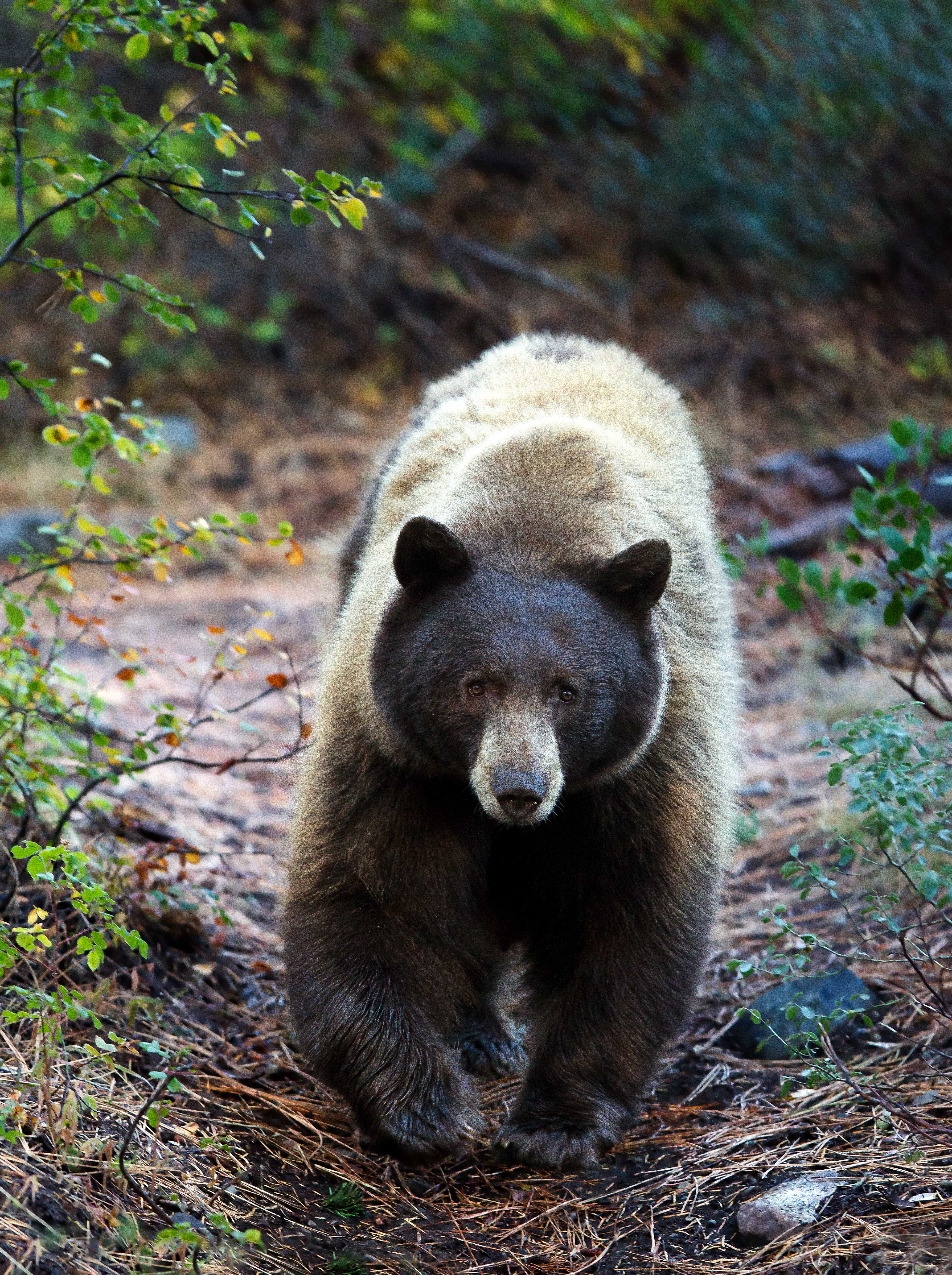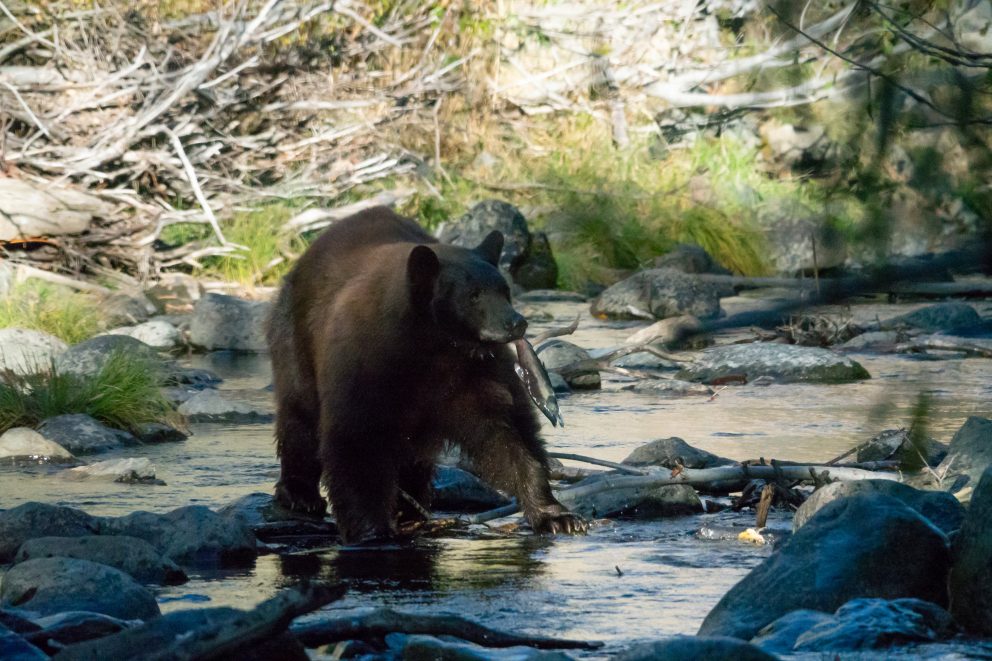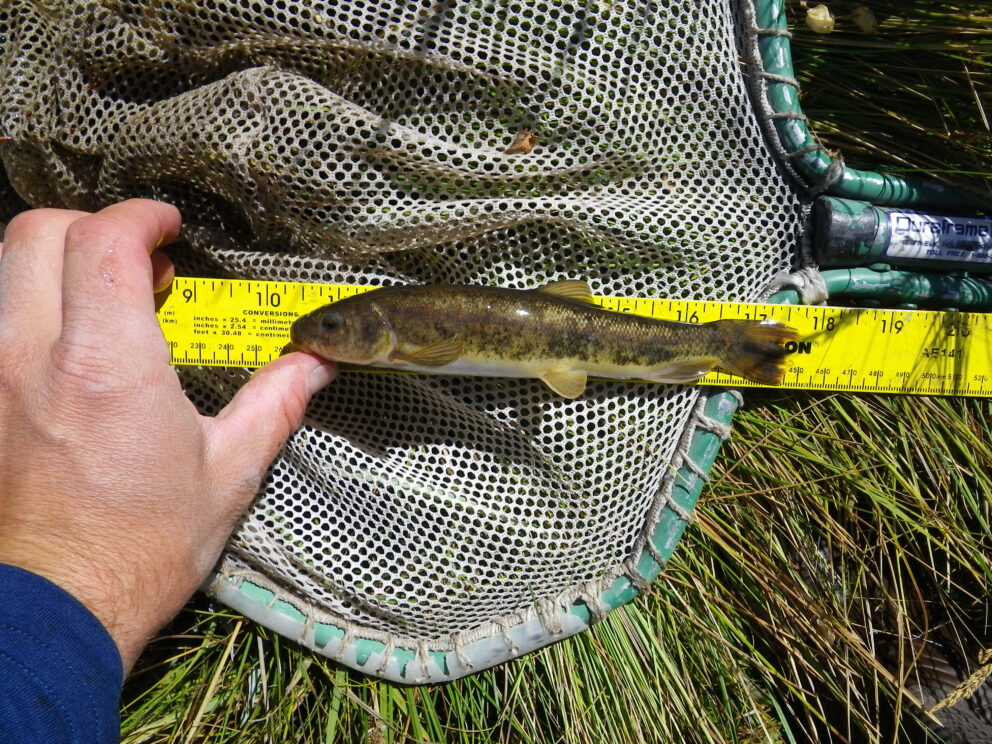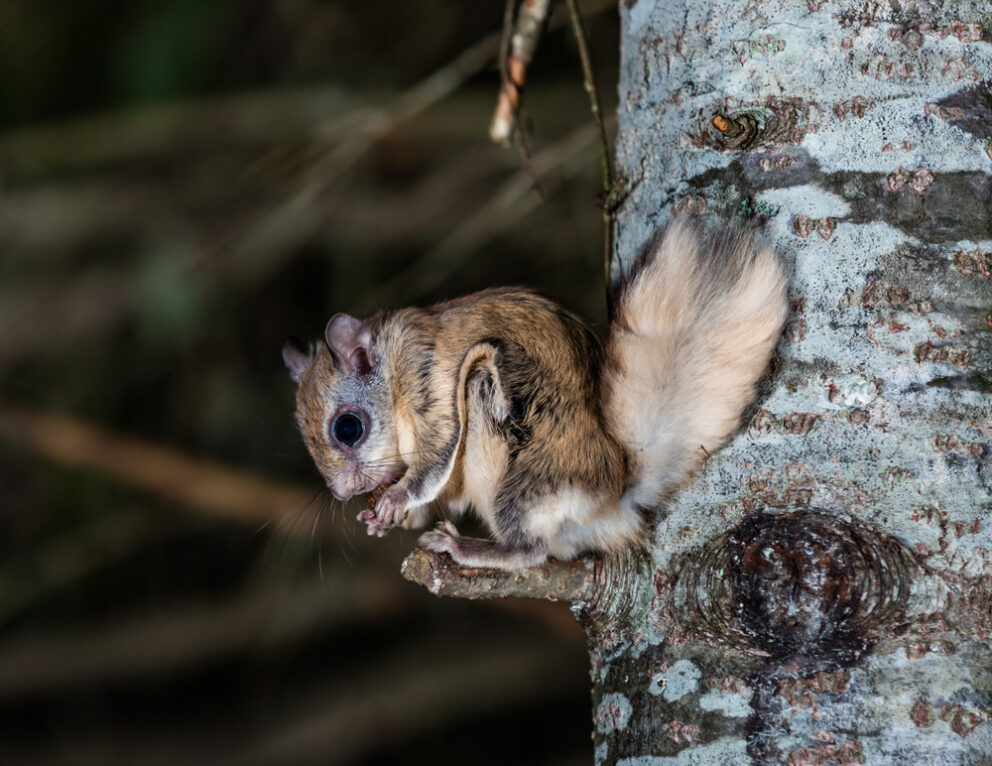- SCIENTIFIC NAME
- Ursus americanus
- CLASSIFICATION
- Mammal
- LIFE SPAN
- 3-30 Years
- SIZE
- 47-79” | 85-900lbs
- STATE CONSERVATION STATUS
-
- State Protected
- FEDERAL CONSERVATION STATUS
- Least Concern
- GAME STATUS
- Game
- GAME TYPE
- Big Game
For information and resources for living responsibly in bear country, visit our Living With Bears page here: https://www.ndow.org/blog/living-with-bears/
- Washoe
- Humboldt
- Pershing
- Churchill
- Mineral
- Lyon
- Douglas
- Carson City
- Storey
- Elko
- Lander
- Eureka
- White Pine
- Esmeralda
- Nye
- Lincoln
- Clark
Habitat & Range
Black Bears are found in the mountainous areas and foothills of the Sierra Nevada and Lake Tahoe areas. Rivers and streams provide a source of food, while forested areas offer cover.
- Upland Forests
Threats
- Human Conflict
Bear Research
| Lessons learned from a 20-year collaborative study on American black bears | View |
| Evaluation of deterrent techniques and dogs to alter behavior of "nuisance" black bears | View |
| Carnivores, urban landscapes, and longitudinal studies: a case history of black bears | View |
| Using Black Bears to Test Ideal-Free Distribution Models Experimentally | View |
| Rapid ecological and behavioural changes in carnivores: the responses of black bears (Ursus americanus) to altered food | View |
| Are Desert Basins Effective Barriers to Movements of Relocated Black Bears (Ursus Americanus)? | View |
| Using Genetic Relatedness to Investigate the Development of Conflict Behavior in Black Bears | View |
| Recolonizing carnivores: Is cougar predation behaviorally mediated by bears? | View |
| Bear Historical Ranges Revisited: Documenting the Increase of a Once-Extirpated Population in Nevada | View |
| Human-Black Bear Conflicts | View |
| Natural rewilding of the Great Basin: Genetic consequences of recolonization by black bears | View |
| An apex carnivore's life history mediates a predator cascade | View |
| Shifting perceptions of risk and reward: Dynamic selection for human development by black bears in the western United States | View |
| Black bear density and habitat use variation at the Sierra Nevada-Great Basin Desert transition | View |
| Assimilated diet patterns of American black bears in the Sierra Nevada and western Great Basin, Nevada, USA | View |
| Risky business: Modeling mortality risk near the urban-wildland interface for a large carnivore | View |
Natural History
Black Bears are solitary animals, meeting only for the breeding season. Female Black Bears can have 1 to 5 cubs at a time and can reproduce every other year so long as there is enough food during the fall to support pregnancy. Black Bears are omnivores, though 85% of their diet is plant-based. During the fall, Black Bears go through a period called hyperphagia. During this time, their appetites go into hyper drive. They can consume 8,000 to 20,000 calories each day in order to put on enough fat to hibernate. If a winter is particularly mild or there is enough food in their territory, Black Bears do not have to hibernate. They can also wake during hibernation and move about their den or give birth.
Fun Facts














